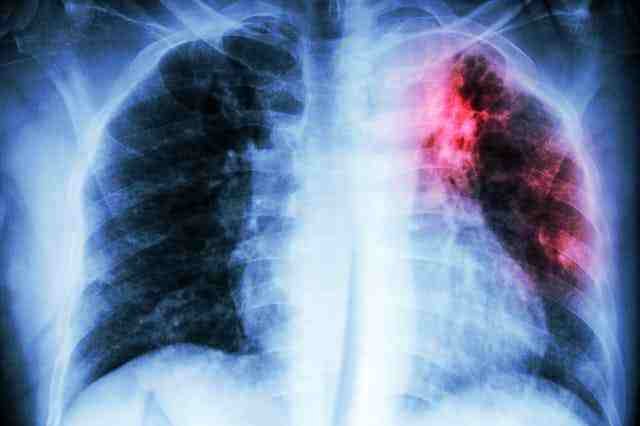Tuberculosis death rate Increases as the Covid-19 Pandemic Lingers

The 2021 Global Tuberculosis (TB) report published by the World Health Organization reveals that the Covid-19 Pandemic has reversed years of global progress in tackling tuberculosis and for the first time in over ten years, TB deaths increased in 2020, with more people dying from it, with very fewer people being diagnosed and treated or provided with TB preventive treatment compared to 2019, and overall spending on essential TB services falling.
According to this report, the first challenge is disruption in access to TB services and a reduction in resources. In many countries, human, financial and other resources have been reallocated from tackling TB to the Covid-19 response, limiting the availability of essential services. Again, people have being going through hard times to seek care in the context of lockdowns. “This report confirms our fears that the disruption of essential health services due to the pandemic could start to unravel years of progress against tuberculosis. This is alarming news that must serve as a global wake-up call to the urgent need for investments and innovation to close the gaps in diagnosis, treatment and care for the millions of people affected by this ancient but preventable and treatable diseases,” warned Dr. Tedros Adhanom Ghebreyesus, WHO Director-General.
TB services are among many others disrupted by the Covod-19 pandemic in 2020, but the impact on TB has been particularly severe. For instance, approximately 1.5 million people died from TB in 2020 (including 214 000 among HIV positive people). The increase in the number of TB deaths occurred mainly in the 30 countries with the highest burden of TB, this report indicates. WHO modelling projections suggest the number of people developing TB and dying from the disease could be much higher in 2021 and 2022.
Challenges with providing and accessing essential TB services have meant that many people with TB were not diagnosed in 2020. The number of people newly diagnosed with TB and those reported to national governments fell from 7.1 million in 2019 to 5.8 million in 2020. WHO estimates that some 4.1 million people currently suffer from TB, but have not been diagnosed with the disease or have not officially reported to national authorities. This figure is up from 2.9 million in 2019.
Global investment for TB falls
The report notes a decrease in global spending on TB diagnostic, treatment and prevention services, from US$ 5.8 billion to US$ 5.3 billion, which is less than half of the global target for fully funding the TB response of US$ 13 billion annually by 2022. Although there is progress in the development of new TB diagnostics, drugs and vaccines, this is constrained by the overall level of R&D investment, which at US$ 0.9 billion in 2019 falls far short of the global target of US$ 2 billion per year.
Global TB targets off track
Globally, the reduction in the number of TB deaths between 2015 and 2020 was only 9.2%, about one quarter of the way to the 2020 milestone of 35%. Again, the number of people falling ill with TB each year (relative to population) dropped 11% from 2015 to 2020, just over half-way to the 2020 milestone of 20%.
However, the WHO European Region exceeded the 2020 milestone, with a reduction of 25%. This was mostly driven by the decline in the Russian Federation, where incidence fell by 6% per year between 2010 to 2020. The WHO African Region came close to reaching the milestone, with a reduction of 19%, which reflects impressive reductions of 4–10% per year in South Africa and several other countries in southern Africa, following a peak in the HIV epidemic and the expansion of TB and HIV prevention and care.
“We have just one year left to reach the historic 2022 TB targets committed by Heads of State at the first UN High Level Meeting on TB. The report provides important information and a strong reminder to countries to urgently fast-track their TB responses and save lives. This will be crucial as preparations begin for the 2nd UN High Level Meeting on TB mandated for 2023.”
The report calls on countries to put in place urgent measures to restore access to essential TB services. It further calls for a doubling of investments in TB research and innovation as well as concerted action across the health sector and others to address the social, environmental and economic determinants of TB and its consequences. The new report features data on disease trends and the response to the epidemic from 197 countries and areas, including 182 of the 194 World Health Organization (WHO) Member States
Global targets
In 2014 and 2015, all Member States of WHO and the UN adopted the UN Sustainable Development Goals (SDGs) and WHO’s End TB Strategy. The SDGs and End TB Strategy both include targets and milestones for large reductions in TB incidence, TB deaths and costs faced by TB patients and their households. The WHO End TB Strategy aims for a 90 per cent reduction in TB deaths and an 80 per cent reduction in the TB incidence rate by 2030, compared to the 2015 baseline. Milestones for 2020 include a 20% reduction in the TB incidence rate and a 35% reduction in TB deaths. The UN Political Declaration on TB also included 4 new targets for the period 2018-2022:
Common facts about TB
It is worth recalling that Tuberculosis, the second (after COVID-19) deadliest infectious killer, is caused by bacteria called Mycobacterium tuberculosis that most often affect the lungs. It can spread when people who are sick with TB expel bacteria into the air, by coughing for example. Approximately 90 percent of those who fall sick with TB each year live in 30 countries. Most people who develop the disease are adults. In 2020, men accounted for 56% of all TB cases, adult women accounted for 33% and children for 11%. Many new cases of TB are attributable to five risk factors: under nutrition, HIV infection, alcohol use disorders, smoking and diabetes. TB is preventable and curable. About 85% of people who develop TB disease can be successfully treated with a 6-month drug regimen Treatment has the added benefit of curtailing onward transmission of infection. 30 countries with the highest burden of TB include: Angola, Bangladesh, Brazil, Central African Republic, China, Congo, Democratic People’s Republic of Korea, Democratic Republic of Congo, Ethiopia, Gabon, India, Indonesia, Kenya, Lesotho, Liberia, Mongolia, Mozambique, Myanmar, Namibia, Nigeria, Pakistan, Papua New Guinea, Philippines, Sierra Leone, South Africa, Thailand, Uganda, United Republic of Tanzania, Viet Nam and Zambia.
Ingrid KENGNE


















